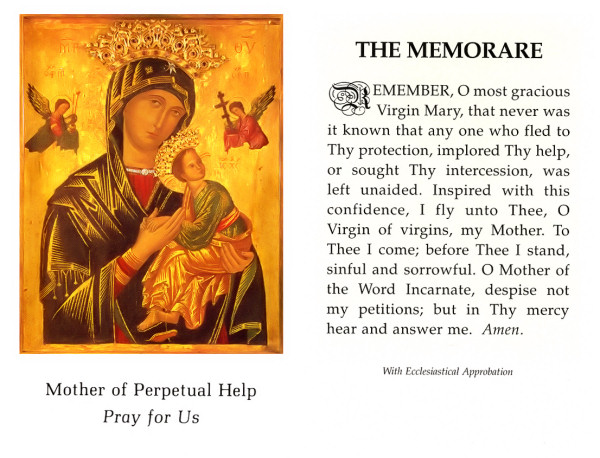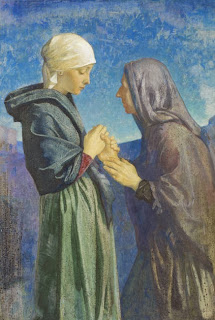Keiko Uemura, a spring flower in the desert. Sunday Reflections, 14th Sunday in Ordinary Time, Year B
Keiko Uemura on her First Communion Day, December 1971
Keiko died 27 April 1972, aged 14
Readings(New American Bible: Philippines, USA)
Readings (Jerusalem Bible: Australia, England & Wales, India [optional], Ireland, New Zealand, Pakistan, Scotland, South Africa)
Gospel Mark 6:1-6 (New Revised Standard Version, Anglicised Catholic Edition)
Jesus left that place and came to his home town, and his disciples followed him. On the sabbath he began to teach in the synagogue, and many who heard him were astounded. They said, ‘Where did this man get all this? What is this wisdom that has been given to him? What deeds of power are being done by his hands! Is not this the carpenter, the son of Mary and brother of James and Joses and Judas and Simon, and are not his sisters here with us?’ And they took offence at him. Then Jesus said to them, ‘Prophets are not without honour, except in their home town, and among their own kin, and in their own house.’ And he could do no deed of power there, except that he laid his hands on a few sick people and cured them. And he was amazed at their unbelief.
Cherry Blossoms in Fukushima [Wikipedia]
Both the New American Bible and the Jerusalem Bible lectionaries read, He was amazed at their lack of faith. Jesus was among his own people, in the town where his brothers and sisters, ie, his cousins, lived. Perhaps his amazement was a form of frustration. Missionaries are men and women who are often 'amazed' at what seems to be their lack of 'success' in changing the situation, whether it is leading people to faith in Jesus Christ or working among baptised people for the justice that the Gospel demands but evidently isn't there.
Yet Jesus laid his hands on a few sick people and cured them. In other words, he found some who responded in faith.
One Columban priest who found faith in Keiko, a very sick 14-year-old girl in Japan, was Fr James Norris, a New Zealander who died on 6 October 2007. Japan is still a country where fewer than one in two hundred are Catholics. He wrote about his experience in Far East, the magazine of the Columbans in Ireland and Britain, in 1973. Father Jim's article made a profound impact on me and I reprinted it in Misyon in March-April 2008. our last printed edition. It is a story that moves me each time I think about it. Maybe the few who believed and were healed consoled Jesus in his humanity. Maybe he felt something of what Father Norris describes in the closing paragraph of his article.
The story of Keiko and her parents shows us that our Catholic Christian faith is a gift from God, a gift for which we should thank him every day.
The story of Keiko and her parents shows us that our Catholic Christian faith is a gift from God, a gift for which we should thank him every day.
A Spring Flower
by Fr James Norris
Cherry Blossoms at the Tokyo Imperial Palace [Wikipedia]
There is a high school in our parish for nearly 2,000 girls conducted by the Sisters of the Infant of Jesus. Very few of these girls are baptized Christians. As a means of contact, I teach English to the junior high school pupils three times a week. My classes are very informal and I am afraid the young ladies don’t take me very seriously, possibly because I give them no homework or exams. My specialty is supposed to be pronunciation and intonation.
One day, early in November 1971, I received a summons from one of my little pupils, Keiko Uemura, aged 14. She was very sick in the hospital and wished to be baptized. I hadn’t noticed her absence at school. The nuns were full of apologies for not letting me know, but they hadn’t thought her illness was serious; moreover, she had never shown any real interest in religion but on the contrary, during religious classes seemed to take a delight in trying to tie the Sister up in knots with embarrassing questions.
When I visited her she seemed in good spirits. After ascertaining that she really did believe and had sufficient knowledge to realize what she was doing, I baptized her. A few days later I returned to the hospital with several books that explained the faith simply and would help her to pray. She began to prepare for her first Holy Communion. I discovered that despite her seemingly frivolous behavior during religion classes, she had retained quite a lot and what was more, in her present crisis could believe, simply and totally, with no reservations.
In December she was moved to the University hospital, the largest in town and the best equipped. Keiko herself was not aware of it, but she was suffering from a rare type of bone cancer that sometimes afflicted children. The doctor gave her three months to live. Her parents were wonderful. One of them was always near her, day and night. In her case this devoted warm parental love was an actual grace that served to open out and expand her soul to receive the grace of God’s love. As Keiko responded to God’s love, the change in her thinking and outlook, her values, could not fail to impress her parents who in turn were drawn along by the girl towards God.
About Christmas time she made her first Holy Communion. She was radiantly happy that day, as is evident from the photo. Present for the occasion were her parents and some of the Sisters from the school. I made a tape recording for future use. Each week I took her Holy Communion. Her mother prepared the altar and with Keiko read the book on doctrine explaining the faith.
Home for the New Year
The girl was permitted to return home for three days over the New Year. As a result of an operation she had recovered so well that she could walk about slowly with the aid of crutches. She believed she was on the way to complete recovery; she was full of roseate plans for her future, a trip to Lourdes followed by a life of service as a nurse to crippled children. Her father hoped against hope for a miracle, but on the quiet he assured me that it was only a question of time.
Spiritual progress
During the next three months she made tremendous spiritual progress. Her mother told me that she herself was sometimes concerned by the flood of visitors, who often outstayed their welcome, even when Keiko was in pain. But the girl never showed it; she always put on a cheerful front and showed her gratitude to all-comers. Later when her mother grumbled about the inconsiderateness of some people, the girl stopped her with: ‘Mother, it may be alright for you to complain because you are not a Christian, but I am one now and must love everybody. Besides, the visitors come because they are interested in me and I am grateful for this.’ Apart from the occasional sigh or moan that escaped her lips, she never complained of the pain.
Shirakawa River [Wikipedia]

As the long winter faded, the cherry blossom trees along the Shirakawa River responded to the warm April sun and flooded the banks with a soft pink mist. I could see the blossoms from the window of her room, but the girl was too young to appreciate the pathos of their beauty – those petals whose destiny was to diffuse their delicate beauty for a brief span, only to be caught by the slightest breeze and flutter to the earth from which they sprang. Keiko never saw her own life and destiny in those blossoms.
About the middle of April she began to weaken. Within a week, she had lost consciousness and was given oxygen. She died peacefully on 27 April. The church was filled at her funeral. Her classmates were heartbroken and inconsolable, far more emotionally upset than her family. Indeed, I was surprised at how calmly her parents bore their great loss. I discovered it was because they had received the grace of the faith through the girl’s influence, even before they had begun any formal instructions. They were convinced that she still lived on in God and that they would meet her again.
Whole family converted
A week after the funeral her parents and her brother began their study of the doctrine. They were model catechumens. Every night before the family altar, united to Keiko in spirit, they said the rosary and read a chapter from the Scriptures. I baptized them on 6 November, the anniversary of Keiko’s baptism. There were tears of joy in their eyes that day as they realized they were united to their daughter by grace within the bosom of God the Father.
One of Keiko’s closest friends who was shattered by her death but very impressed by the spiritual change in the girl before her death, has resolved to follow in her footsteps and pursue the ideal of service Keiko set for herself had she lived. She is now under instructions and intends to become a nurse.
Fr James Norris after officiating at the joint wedding ceremony of three brothers in Japan
Testimony of her faith
There was nothing sensational about this girl’s short life. She did nothing that would merit notice in the mass media; her life created no more of a stir in society than a petal falling to the ground. But I am convinced her story is real news and a genuine success story. In these days of superficial sensationalism, even we Christians tend to forget that the real battles of life are won or lost within the depths of the heart where a man meets his God and says yes or no.
Moreover, in a country like Japan, a missioner seldom sees the grace of God’s action working so powerfully and swiftly in a soul. Such tangible evidence of God’s presence is almost a physical sign of His love which bolsters one’s hope no end, enabling the missioner to keep going. This slip of a girl was a candle in the darkness, a spring flower in the desert.

Composer: Saburo Takada; singer: Atsuko Azuma








Comments
Post a Comment